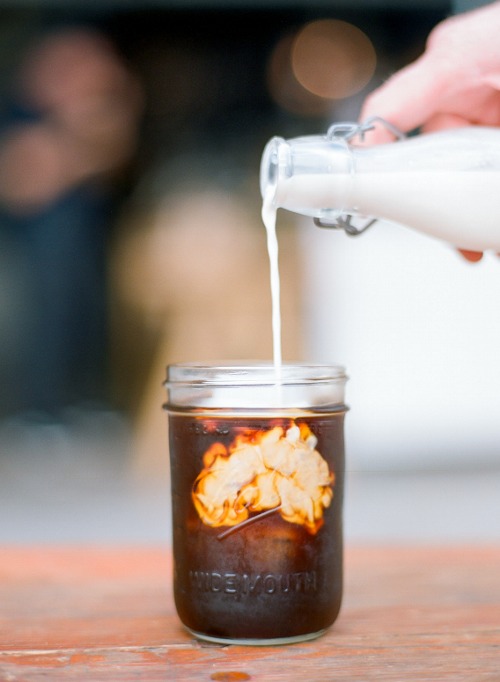Single bean grading, price, raw bean and baking curve of Sidamo Ted Manor

For professional baristas, please follow the coffee workshop (Wechat official account cafe_style)
Single bean grading, price, raw bean and baking curve of Sidamo Ted Manor
HARRAR
This area is the town around Hara and is the oldest production area. Coffee in this area is so special that it is not in an environment that requires additional irrigation. Hara enjoys a high reputation over the years, although the sun treatment can adjust the original turbid, woody soil flavor to a bright blueberry flavor. Coffee beans are so special and memorable that people who have worked in this coffee industry have opened their eyes to the diversity of bean flavors.
Altitude: 1500-2100m
Harvest: November-February
Variety: Heirloom
YIGACHEFFEE
Yegashev Coffee in short: diverse and unique. Many of the great washed beans show explosive aromas, full of citrus and floral aromas, and have a light and elegant nature. There is no denying that this area is a high-quality and interesting coffee bean production area, and of course the best beans get higher prices. The characteristics of Yegashev can recommend those who like Earl Grey Tea to try. In addition, some beans are treated in the sun, which is also extremely interesting and enjoyable.
Altitude: 1750-2200m
Harvest: October-January
Variety: Heirloom
The coffee market regulatory body in Ethiopia is the Ethiopian Coffee and Tea products Administration. There are two auction centers in the country, one in the capital Addis Ababa (Addis Ababa) and the other in Dire Dawa in eastern Ethiopia. Coffee growers wash fresh fruits or take them to private coffee processing plants or cooperative coffee washing stations. Washed and dried coffee beans are transported to a central store in Addis Ababa, the capital, where they are fully inspected and soaked, rated according to poor quality and auctioned. Coffee from state-owned farms has to follow the same procedure after being processed by the farm. Buyers who participate in the auction will carefully observe the coffee beans and their soaking proof before bidding. The bidding takes the form of buyers shouting out the list price. Ethiopia exports 80% of the natural or sun-cured coffee beans and 15% of the wet-processed coffee beans every year. Ethiopia has about 2.5% of the global coffee market. Ethiopia's coffee is exported to all parts of the world, and Germany, Japan, Saudi Arabia and the United States are Ethiopia's four major coffee exporters. On average, Ethiopia exports about 109000 tons of coffee (equivalent to 1.8 million bags of 60 kg coffee) to all parts of the world each year.
Ethiopian coffee beans grow in close to the natural environment, after years of planting under the same growth conditions, Ethiopian coffee beans have gradually adapted to the environment here. More than 60% of coffee beans are grown in forests or semi-forests.
Large-scale coffee-growing villages account for about 35% of the country's total coffee production. These coffee farms, which use a multi-tier coffee planting system, are carefully cared for. Coffee farmers do not use chemical fertilizers, but use fallen leaves and animal and plant debris to increase soil nutrition. In addition to coffee, farmers also frequently grow non-coffee crops. Even manor coffee (coffee produced by state-owned farms), which accounts for 5% of the country's total coffee production, shows the characteristics of forest coffee production.
Located in the most advantaged natural conditions, Ethiopia produces unique high-quality coffee every year. Ethiopia's coffee growing cycle brings the joy of harvest to the country every year. Beautiful white coffee flowers will bloom and bear fruit every year from March to April. Only the reddest and ripe fruits are selected as coffee ingredients between September and about December. The export of new coffee starts in November or December every year.
Ethiopians have a penchant for coffee, with an annual per capita coffee consumption of 3 kg. Ethiopia ranks first in terms of coffee consumption in Africa and, if compared with European countries, can also rank among the top-middle coffee consuming countries in Europe.
Now, Ethiopia produces coffee not only for drinking, but also for coffee lovers around the world to enjoy it better. With the continuous improvement of the quality and production efficiency of the coffee industry, Ethiopia is now more than ever able to provide high-quality coffee to even the most picky and discriminating customers. Ethiopia hopes that not only the coffee consumers in the world but also the Chinese people can share this precious wealth of Ethiopia. Because Chinese people have gradually become "experts" in appreciating the quality of coffee.
The most direct grasp of coffee flavor) to ensure the quality of each batch. Before the harvest season, Trabocca invites selected smallholder organizations / producers to participate in the production of micro-batches of coffee (about 1500 to 3000 kg), carefully picking 100% ripe red coffee cherries by hand (hence the Red Cherry Project). Trabocca provides financial loan support, new hardware equipment and production processing knowledge and technology to assist farmers, promising to buy at a good price as long as the quality of the actual output meets the cup test standards in Addis Ababa in Ethiopia and Amsterdama in the Netherlands. This year, the passing standard set by Trabocca is 88 points. The beans of the red cherry project are packed in plastic inner bags (GrainPro bags or vacuum box) immediately after the processing of the origin is completed, and then shipped to Djibouti for shipping. Strive for perfect quality through immediate monitoring, safe transportation and timely and appropriate handling.
Kaibedo is a small coffee cooperative in a small town in Dala, Sidamo Province. the average planting area of each small coffee farmer here is about 0.6ha, which is composed of hundreds of coffee farmers. it is planted nearly 2000 meters above sea level, with a large temperature difference and fertile soil, which provides an excellent growing environment, and the raw bean itself exudes a strong aroma of raisins and fermented wine. The nearly yellowish-brown beans are actually small and slender, but the weight on the hands is very solid. After baking, we found that the bright berry aroma, or rich chocolate-like aftertaste, makes this bean have an eye-catching performance, whether it is light baking or deep baking.
The coffee in Sidamo has a variety of flavors. Different soil types, microclimates and countless native coffee species, towering mountains, highlands, plateaus, valleys and plains, diverse topography, and the geology of the area belongs to nutrient-rich, well-drained volcanic soil. the depth of the soil is nearly two meters, and the surface soil is dark brown or brown. The biggest advantage of the area is that the soil fertility is maintained through the circulation of organic matter, using the withered leaves of the surrounding trees or the residual roots of the plants as fertilizer. Therefore, the coffee produced in cities and towns has obvious differences and characteristics. In 2010, Murray 2012, it continuously obtained the high score of CR92--94, the authoritative coffee evaluation website in the United States. Thus it can be seen that the raw beans in this area are extraordinary.
Sidamo Coffee beans are grayish, thick in some places and small in others, with soft and strong acidity, mellow and sweet and spicy. It is one of the courtyard coffees in the highlands of southern Ethiopia. Unlike ordinary African coffee, Sidamo has clear acidity, smooth taste and delicate floral smell.
The taste of Sidama in the sun is close to the smell of flowers, but it is about a little earthy. Water washing has a nutty fruit aroma with a slight cocoa aroma, but what the two have in common is smooth taste and viscosity, comfortable and pleasant acidity and fragrance. Light or medium roasting is suitable for individual products, while medium or deep roasting is suitable for blending coffee and good Espresso base.
The washed Sidamo is light green, the beans are small, the growth is oval, the fruit is full, the average quality is good, the smell is fragrant and mellow, a drop of entrance, endless aftertaste, with wild beauty. It is elegant and playful, the entrance taste is mild and pleasant, and later bright lemon acid form a strong taste impact, the taste is unique and mellow, the taste is unique and pleasant, and the slowly rising end rhyme contains chic sweetness.
Ethopia Ethiopia
Population: 93877000
The name of the producing area of Ethiopia is the most recognized in the coffee industry, and it is currently the country with the highest number of coffee names as the name of the producing area. This is the case today, and the future is foreseeable. In addition, the Arabica genetic potential of the original species and wild species will also be a major advantage of Ethiopian coffee.
SIDAMO
Hidamo and two other regions, ─ Hara and Yegashev, were approved by the Ethiopian government to register their trademarks in 2004, making the region's reputation and local coffee beans more recognizable. Hidamo's mixed use of water washing and sun treatment is popular among consumers who like fruit and strong aromas. After Italy withdrew from Ethiopia in 1942, locals called themselves Sidama. Therefore, Sidamo or Sidama is the general name of coffee beans in this area. Some high-quality coffee beans from Ethiopia are also grown in this area.
Altitude: 1400-2200m
Harvest: October-January
Variety: Heirloom
LIMU
Even without the reputation of Hidamo and Yegashev, Lim still produces amazing coffee. Most of the areas are small farmers, but there are also some large estates belonging to the government.
Altitude: 1400-2200m
Harvest: November-January
Variety: Heirloom
Important Notice :
前街咖啡 FrontStreet Coffee has moved to new addredd:
FrontStreet Coffee Address: 315,Donghua East Road,GuangZhou
Tel:020 38364473
- Prev

Flavor characteristics, producing areas and cooking parameters of single bean in Sidamo Ted Manor
For the exchange of professional baristas, please pay attention to the coffee workshop (Wechat official account cafe_style). The coffee market management agency of Ethiopia is the Ethiopian Coffee and Tea products Administration. There are two auction centers in the country, one in the capital Addis Ababa and the other in Ethiopia
- Next

Sidamo Ted Manor single bean varieties, brand recommendation and manor introduction
For the exchange of professional baristas, please pay attention to the coffee workshop (Wechat official account cafe_style) Sidamo Tade Manor single bean species, brand recommendation and manor introduction SIDAMO Hidamo and the other two regions ─ Hara and Yegashev registered trademarks approved by the Ethiopian government in 2004, making the region's reputation and local characteristics of coffee beans, together to improve the recognition
Related
- Does Rose Summer choose Blue, Green or Red? Detailed explanation of Rose Summer Coffee plots and Classification in Panamanian Jade Manor
- What is the difference between the origin, producing area, processing plant, cooperative and manor of coffee beans?
- How fine does the espresso powder fit? how to grind the espresso?
- Sca coffee roasting degree color card coffee roasting degree 8 roasting color values what do you mean?
- The practice of lattes: how to make lattes at home
- Introduction to Indonesian Fine Coffee beans-- Java Coffee producing area of Indonesian Arabica Coffee
- How much will the flavor of light and medium roasted rose summer be expressed? What baking level is rose summer suitable for?
- Introduction to the characteristics of washing, sun-drying or wet-planing coffee commonly used in Mantenin, Indonesia
- Price characteristics of Arabica Coffee Bean Starbucks introduction to Manning Coffee Bean Taste producing area Variety Manor
- What is the authentic Yega flavor? What are the flavor characteristics of the really excellent Yejasuffi coffee beans?

